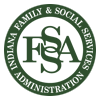Over the weekend, the U.S. Department of Health and Human Services issued a reminder that people with disabilities have the same worth as everybody else.
That the agency felt compelled to issue such a directive reflects the anguishing choices that American medicine has begun to confront: When medical personnel, equipment and supplies are limited, who gets lifesaving care and who doesn’t?
The HHS bulletin appeared to respond to a complaint filed with the federal agency last week by Washington state groups that serve people with disabilities. The groups argued that a draft of an emergency health plan, proposed by Washington state health officials and hospitals, gave lower priority to those with disabilities.
State and local health departments across the country have developed detailed emergency health plans in recent years, often in response to major natural disasters, such as Hurricane Katrina, or outbreaks of diseases, such as the avian and swine flus. Many of these plans, such as those in Minnesota and New York, included guidelines for rationing care in the event of shortages of medical supplies or personnel.
Federal health agencies have not issued guidelines on how to make such decisions. For example, states say they don’t understand the criteria the federal government has been using in allocating limited medical resources from the U.S. stockpile.
At least some of the state plans include the sort of language that prompted the protest in Washington state. The emergency health plan Alabama drafted in 2010, for example, states that “persons with severe mental retardation, advanced dementia or severe traumatic brain injury may be poor candidates for ventilator support.†It’s unclear if that provision is part of the state’s current emergency plan.
On the front lines, medical providers are desperately trying to avoid choosing among patients. New York-Presbyterian Hospital, at the epicenter of the outbreak, began experimenting with sharing ventilators between two patients rather than one.
According to media reports, some U.S. hospitals already are considering issuing do-not-resuscitate orders for infected patients, regardless of the wishes of the patients. Among the hospitals identified as considering that option is Chicago’s Northwestern Memorial Hospital.
“We have not made any policy changes to patient care,†said Christopher King, a spokesman for the hospital. “What we have been doing, and similar to health systems around the country dealing with COVID-19, is conducting internal discussions and scenario planning on how to care for patients with COVID-19.â€
A Change in Decision-Making
To be sure, some medical professionals have long experience making such choices — those who have operated in war zones or provided care in the wake of natural disasters, for example. And doctors and hospitals often have to choose who will get healthy organs for transplants when precious few are available.
In the last decade or so, some states have expanded these conversations.
For example, in 2006 New York health officials created emergency protocols in response to an avian flu outbreak in Asia. Their guidelines addressed an issue rattling health systems now: how to ethically allocate ventilators when the supply doesn’t meet the demand.
“The clinical guidelines propose both withholding and withdrawing ventilators from patients with the highest probability of mortality to benefit patients with the highest likelihood of survival,†the New York guidelines state.
In Louisiana after Hurricane Katrina, lawmakers passed measures to indemnify health professionals when they were forced to determine which patients received life-sustaining treatments. The state also convened medical experts to draft plans to determine how those decisions should be made.
Most other states also began creating emergency health plans, especially after the H1N1 outbreak in 2009. Because of the sensitivity of the subject, many of those conversations occurred without public input, which drew some criticism for a lack of transparency.
Others are just now getting to it. New Jersey, for example, has created a bioethics committee that will meet this week to talk about how to parcel out ventilators and other lifesaving care.
The decisions about who should get care should not be based simply on who shows up first, said Nancy Berlinger, resident scholar of the Hastings Center, a New York-based research institution that studies bioethics. Berlinger directed the center’s production of guidelines for medically ethical considerations in the current outbreak.
“One principle that we articulate in our guidance is that ‘first come, first serve’ is not a satisfactory approach,†Berlinger said. “Just because you are part of the first wave shouldn’t give you a claim on a resource so that nobody who comes in after you has access to it.â€
Philip Rosoff, an emeritus professor of pediatrics at Duke University and longtime chairman of the Duke Medical Center ethics board, said decisions should be made on the best and most current clinical evidence and with one question uppermost: Who stands to best benefit from the limited quantity of lifesaving treatment?
Those guidelines, Rosoff said, should explicitly state that “allocations will be based on clinical evidence only and without consideration of social, ethnic, economic and other non-clinical considerations of people. You don’t want to exacerbate pre-existing social disparities that already prevail in this country.â€
Bioethicists say providers should focus first on a patient’s underlying health condition and whether that condition lowers the chance of recovery.
“If I have limited amounts of lifesaving treatment, and the chances of you responding well to it are 5% because of an underlying condition, and someone else who doesn’t have that condition has a 50% chance of doing well with it, what should you do? You have one treatment. Who should get it?†Rosoff said.
“That’s not discrimination; it’s just the way it is.â€
Rosoff agreed that such strategies would tend to favor young and healthy people over older ones, who are far more likely to have chronic and serious medical conditions.
“That being said, if two people come in and their clinical characteristics are such that they have an equal chance of survival, they should have an equal shot of getting on advanced lifesaving treatment,†Rosoff said, whatever their respective ages.
For years medical ethicists have debated whether age alone should be the deciding factor in determining who gets lifesaving care first. The idea that youth should be given preference even has a name, one derived from the sport of cricket: the fair innings argument. It posits that an older person has already had a chance to live a long life.




